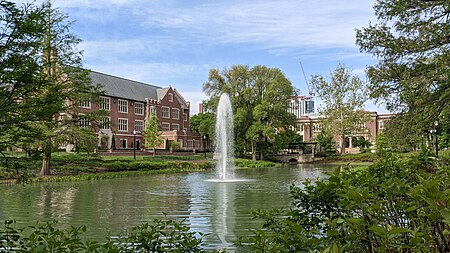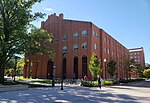The Ohio State University (Ohio State or OSU) is a public land-grant research university in Columbus, Ohio. A member of the University System of Ohio, it was founded in 1870. The university consists of sixteen colleges and offers over 400 degree programs at the undergraduate and graduate levels. The main campus has grown into the fifth-largest university campus by enrollment in the United States, with nearly 50,000 undergraduate students and nearly 15,000 graduate students. The university also operates regional campuses in Lima, Mansfield, Marion, Newark, and Wooster.
Founded with a focus on various agricultural and mechanical disciplines, Ohio State developed into a comprehensive university under the direction of Governor Rutherford B. Hayes. It is classified among "R1: Doctoral Universities – Very high research activity". As of 2023, the university has an endowment of $7.4 billion. The university has over 1,000 student organizations; intercollegiate, club and recreational sports programs; student media organizations and publications, fraternities and sororities; and three student governments. Its athletic teams compete in NCAA Division I as the Ohio State Buckeyes as a member of the Big Ten Conference for the majority of fielded sports. As of 2017, Ohio State's football program is valued at $1.5 billion.
A member of the Association of American Universities, Ohio State is a leading producer of Fulbright Scholars. Past and present alumni and faculty include six Nobel Prize laureates, nine Rhodes Scholars, seven Churchill Scholars, one Fields Medalist, seven Pulitzer Prize winners, 64 Goldwater scholars, seven U.S. senators, 15 U.S. representatives, and 104 Olympic medalists.










